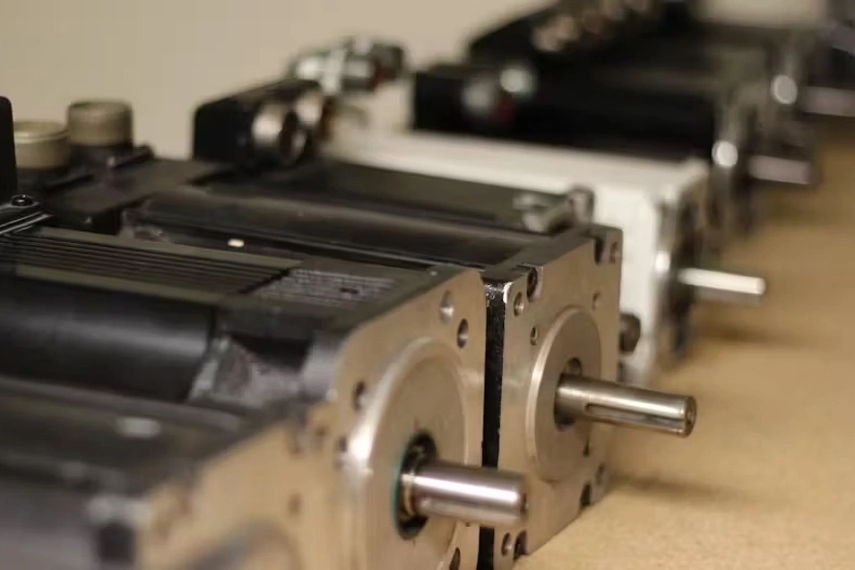Servo Motor Test
2024-09-04 15:12:22
Servo motors are essential components in many automation and control systems, providing precise motion and positioning. Testing a servo motor is crucial for ensuring its reliability and performance. This article provides a comprehensive overview of the methods and procedures for testing servo motors, drawing on detailed information from authoritative sources to ensure accuracy and reliability.

Understanding Servo Motors
Servo motors are specialized electric motors designed for precise control of angular or linear position, velocity, and acceleration. They are commonly used in applications requiring high performance, such as robotics, CNC machinery, and automated manufacturing systems. A servo motor typically consists of a motor, a feedback device (often an encoder or resolver), and a control circuit. Proper testing of these components is essential to verify the motor's operational status and diagnose potential issues.
Importance of Servo Motor Testing
Regular testing of servo motors is important for several reasons:
- Performance Verification: Ensures that the motor performs within specified parameters and meets application requirements.
- Preventive Maintenance: Identifies potential issues before they lead to failures, reducing downtime and repair costs.
- Troubleshooting: Helps diagnose and address performance issues or failures in the motor or associated control systems.
Methods for Testing Servo Motors
Visual Inspection
Objective: Identify obvious signs of damage or wear.
Procedure:
- Physical Damage: Check for cracks, dents, or other visible damage to the motor housing.
- Wiring and Connectors: Inspect wiring and connectors for signs of wear, fraying, or loose connections.
- Cooling: Ensure that the cooling fans or ventilation openings are not obstructed by dust or debris.
Electrical Testing
Objective: Verify the electrical characteristics of the servo motor.
Procedure:
- Insulation Resistance: Use an insulation resistance tester (megohmmeter) to measure the resistance between the motor windings and ground. A high resistance value indicates good insulation, while a low value suggests potential insulation issues.
- Continuity Check: Measure continuity across motor windings to ensure there are no open circuits or shorts.
- Power Supply: Verify that the servo motor receives the correct voltage and current from the power supply. Use a multimeter to measure voltage and current during operation.
Functional Testing
Objective: Assess the operational performance of the servo motor.
Procedure:
- Manual Operation: If possible, manually rotate the motor shaft to check for smooth operation and any unusual noises.
- Controller Testing: Use the motor's control system or an external test controller to command the motor through its operating range. Monitor the motor's response to verify that it follows commands accurately and performs as expected.
- Feedback Verification: Test the feedback device (encoder or resolver) to ensure it provides accurate position and speed information. Compare the feedback signals with the actual motor position and speed.
Load Testing
Objective: Evaluate the motor's performance under operational load conditions.
Procedure:
- Apply Load: Connect the motor to a test load that simulates the operational conditions it will experience in the field.
- Monitor Performance: Observe the motor's behavior under load, including its ability to maintain speed, torque, and position. Check for any signs of overheating or performance degradation.
Vibration Analysis
Objective: Detect potential mechanical issues or imbalances.
Procedure:
- Use Vibration Sensors: Attach vibration sensors to the motor and measure vibration levels during operation.
- Analyze Data: Compare the vibration data against standard thresholds to identify any abnormal vibrations that could indicate issues such as misalignment, imbalance, or bearing wear.
Thermal Imaging
Objective: Identify overheating or thermal issues.
Procedure:
- Use Thermal Cameras: Employ thermal imaging cameras to monitor the temperature of the servo motor during operation.
- Analyze Results: Look for any hotspots or abnormal temperature patterns that could indicate cooling issues, excessive friction, or other potential problems.
Troubleshooting Common Issues
Motor Not Starting
Possible Causes: Check for issues such as power supply problems, faulty wiring, or a malfunctioning control system.
Solutions: Verify power supply connections, inspect wiring for continuity, and test the control system.
Inaccurate Positioning
Possible Causes: This could be due to problems with the feedback device, incorrect calibration, or mechanical issues.
Solutions: Test the feedback device, recalibrate the motor, and inspect mechanical components for wear or damage.
Overheating
Possible Causes: Overheating may result from excessive load, inadequate cooling, or internal electrical issues.
Solutions: Ensure that the motor is not overloaded, verify that cooling systems are functioning properly, and check for electrical faults.
Unusual Noises
Possible Causes: Noises could indicate mechanical issues such as bearing wear, misalignment, or internal damage.
Solutions: Inspect the motor bearings, check for proper alignment, and look for signs of internal damage.
Conclusion
Testing a servo motor is a crucial process for maintaining its performance and ensuring the reliability of automation systems. By employing a variety of testing methods—ranging from visual inspections and electrical testing to load and vibration analysis—one can comprehensively assess the motor's condition and address any potential issues. Regular testing not only helps in preventive maintenance but also aids in troubleshooting and optimizing the performance of servo motors.
See What Lunyee Can Do For You
Contact Us
- 8619149417743
- +86-0371-5562 0274
- [email protected]
- Zhengzhou, Henan Province, China
- Mon-Fri: 9:00 - 18:00




